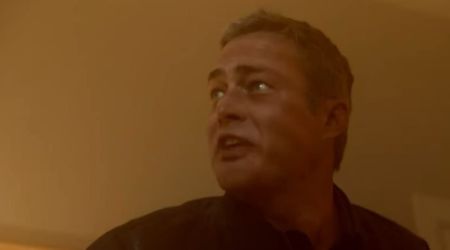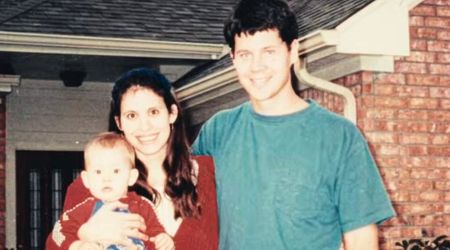'Elizabeth Smart: Finding Justice': What is Stockholm syndrome? 5 chilling cases of captor-hostage bonds

'Stockholm syndrome' is a term we often come across as cited in hostage situations. People held in captivity succumb to physical and emotional manipulation that renders them vulnerable to their aggressor. It is a condition where the hostage develops a peculiar bond with the person holding them prisoner. The bond can range from positive feelings of empathy and the illusion of romantic interest to negative feelings brought about by abuse and fear. The term was coined some 40 years ago, at the end of a six-day bank siege. Lifetime's new true-crime documentary special entitled 'Elizabeth Smart: Finding Justice', is shedding light into this bizarre complex. It is a part of the network's new 'Ripped from the Headlines' series which delves into some of the most infamous suspense, crime, and justice stories to date.
What is Stockholm syndrome?
Stockholm syndrome is a psychological response that psychologists described as an extreme coping or survival mechanism in a hostile situation. Hostages develop an emotional attachment or psychological bond with their captors. While sometimes characterized as a product of intimate times shared with the captors, they are mostly an irrational result culminating from the dangers occurring during captivity. Research over the years has found that about 8 percent of the victims of any form of captivity show signs of developing this complex psychological phenomenon.
The syndrome has been a subject of studies for years and psychologists believed that the bond emerges when a captor who threatens the captive's life chooses not to kill them after much deliberation. The captive's relief at escaping the death threat is interchanged as feelings of gratitude toward the captor for sparing their life. Stockholm syndrome is also common in family, romantic and interpersonal relationships. The abuser may be a husband or wife, boyfriend or girlfriend, father or mother, or any member with a position of control or authority in the family.

The phrase was first coined by criminologist and psychiatrist, Nils Bejerot, after the August 1973 Norrmalmstorg bank robbery in Stockholm, Sweden. The building was raided by gunmen who held four bank employees captive for six days in one of the bank's vaults. Over the course of these days, the hostages formed a unique alliance with the criminals. So, when they were released, the hostages defended their captors and refused to testify against them in court. Dr Frank Ochberg, a psychiatrist, had been very fascinated by the phenomenon that he went on to develop and define the syndrome for the Federal Bureau of Investigation and Scotland Yard in the 1970s.
Stockholm syndrome centers around survival instinct. Victims who are forced to depend on their captors and in the midst of terrible conditions, tend to interpret small acts of kindness as good treatment. They develop hypervigilance to the needs of their captors, making psychological connections between their happiness and that of their captors. Rescued victims are said to initially be in a trance-like state where their rational mind is so muddled, that they are unable to differentiate between right and wrong and found captivity to be comforting. With ample research, by the 21st century, psychologists had expanded their understanding of Stockholm syndrom from hostages and other groups making it applicable to some victims of domestic violence, cult members, prisoners of war, procured prostitutes and abused children. The American Psychiatric Association (APA), however, does not include Stockholm syndrome in its Diagnostic and Statistical Manual of Mental Disorders (DSM).
Here are 5 infamous cases of Stockholm Syndrome:
Elizabeth Smart

Elizabeth Smart was kidnapped from her bedroom in Salt Lake City, Utah, in June 2004. The 14-year-old was abducted by Brian David Mitchell, who posed as a religious preacher, and was held captive for nine months at a campsite on the outskirts of the city. She lived with Mitchell and his wife, Wanda Barzee. Mitchell performed a rudimentary marriage ceremony to tie himself to Smart and then proceeded to rape her. Later, she was chained to a tree and abused. Over the course of her captivity, she was raped repeatedly and psychologically molded to be submissive, and any acts of disobedience were met with violent threats. Smart soon became a model captive and followed orders.
She went on many outings with Mitchell and Barzee, and on one occasion, when she was approached by a police officer, she chose not to reveal her identity or scream for help. The trio subsequently moved to California, then the East Coast. After Smart appealed to Mitchell to return to Utah for spiritual reasons, he agreed and the trio moved yet again. This time, they were recognized by the flurry of news articles across every broadcast network. Smart was rescued from her abductors and returned to her family. Seven years later, she testified against Mitchell and Barzee. Mitchell was sentenced to life in prison and Barzee is serving a 15-year prison sentence.
Patricia Hearst

California newspaper heiress Patty Hearst was kidnapped by revolutionary militants, Symbionese Liberation Army (SLA) in 1974. The gun-brandishing domestic terrorists broke into her apartment in Berkeley California, where they beat up her fiance and took her hostage. The FBI was put on her rescue mission, and they learned that the SLA was attempting to wage war with the US. They kidnapped granddaughter of the publishing giant, William Randolph Hearst, as financial and political collateral. During her captivity, Hearst developed sympathy for her captors and some 10 weeks later she helped her kidnappers rob a California bank. She was eventually caught and received a seven-year prison sentence on charges of robbery. Hearst's defense lawyer claimed that then 19-year-old had been brainwashed and was suffering from Stockholm syndrome. She only served a two-year sentence before she was commuted and later pardoned.
Natascha Kampusch

Ten-year-old Natascha Kampusch was abducted by two men while on her way to school in March 1998. For the following eight years, she was held captive in a cellar beneath the garage of a house of a man named Wolfgang Přiklopil. As time passed she was granted permission to leave the room and was given more freedom as long as she didn't reveal to anyone that she was being held captive. She lived with Přiklopil under a pretense of a couple, living in a distorted version of normalcy. However, he did rape and beat her occasionally.
She finally managed to slip away from the house in August 2006 and found a neighbor who called the police. When he realized he would end up jail for his crimes, Přiklopil jumped in front of a moving train in Vienna, Austria. Kampusch was devastated by the news of his death. She wept for him and even demanded to be left alone with his coffin for hours. Years after her escape, she continued to carry a picture of Přiklopil in her wallet.
Colleen Stan
Twenty-year-old Colleen Stan was kidnapped in 1977, by a couple with a child when she was hitchhiking to a friend's party. She was initially comforted by the presence of a child in the car, but the husband, Cameron Hooker, drove his car to a deserted area and raped and tortured her at knife-point. With his wife, Jan's help, he planned to turn Stan into a sex slave and she was tortured into submission, punishment and psychologically manipulated to remain loyal to her captors throughout her imprisonment. Hooker built a coffin where he held Stan captive for almost the entirety of her seven-year captivity.
Four years in, she was allowed to return home and stay overnight with her unsuspecting family but she afterward returned to Hooker. Eventually, Jan who had a sudden change of conscience decided to release Colleen and even helped her escape. Hooker was apprehended by the police and eventually convicted of kidnapping and torture. In November 1985, he was sentenced to 104 years in prison.
Mary McElroy
Mary McElroy, 25, had been taking a bubble bath in her father's house in May 1933, when she was abducted by four men, including Walter and George McGee. They had broken into her house, waited for her to get dressed, and then taken her to an old farmhouse, where they chained her to a wall in the basement. McElroy was the daughter of then Kansas City Manager, Henry F McElroy, and when the men realized that she would be potential monetary profit, they demand $60,000 in ransom money. Her release was eventually negotiated at $30,00 and after receiving the payment, McElroy was free to return to her family. Three of the four men were later captured and sent to trial, but McElroy asserted that she was well cared for during her 29 hours of captivity. Apparently, one of the men had even wooed her with flowers.
When their trail culminated with harsh sentences, McElroy was filled with guilt and publically sympathized with her abductors. She called upon Governor Guy Brasfield Park to reverse the sentence. She remained friends with McGee brothers throughout their incarceration and even visited them in prison with gifts in hand. The ordeal, however, had led to many nervous breakdowns in McElroy, but it spiraled out of control after her father's death in 1939. In January 1940, McElroy ended her life with a gunshot to the head. Part of her suicide note read: “My four kidnappers are probably the four people on earth who don’t consider me an utter fool.”
'Elizabeth Smart: Finding Justice' airs on Sunday, August 2, at 10 pm ET/PT on Lifetime.










